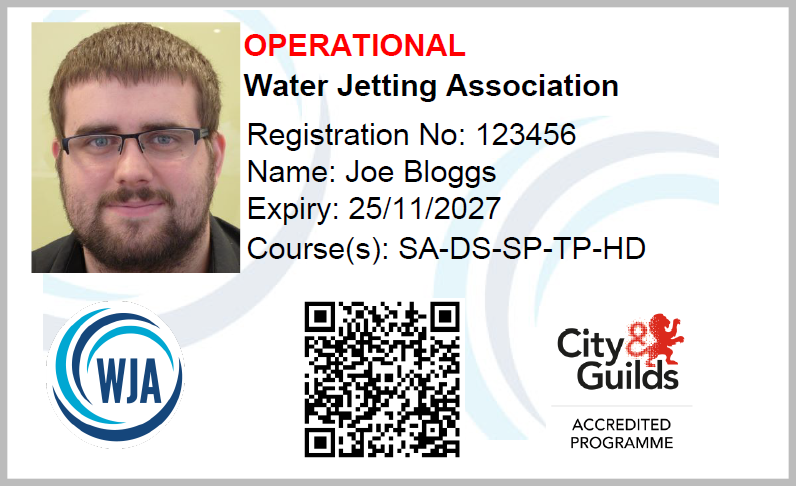Hydrodemolition
Contact usThe Water Jetting Association (WJA) Approved Hydro Demolition Course
Who is the course for?
This course is designed to offer participants both classroom based theoretical tuition together with practical instruction in the safe and efficient use of high-pressure, and ultra-high-pressure water jetting equipment and accessories for various hydro demolition applications.
Are there any prerequisites?
Participants must hold a current valid Safety Awareness Photocard issued by the WJA.

What is involved?*
Hydrodemolition entails the use of high pressure or ultra-high-pressure water jet equipment in place of conventional tools to remove concrete and other materials. It is an incredibly effective way to cut down concrete without affecting steel substructures and other important parts of the structure. The Hydrodemolition process is more accurate than other techniques, especially hydraulic power tools, because there are no vibrations. Water jets are much easier to target and there is very little impact on surrounding materials. The process is also much safer than other approaches, dramatically reducing the risk of workplace injuries.
This is a one-day course offering theoretical and practical instruction.
Once the course has been successfully completed participants will be issued with a Photocard along with granted access to the WJA App by the Water Jetting Association (WJA). The Card is recognised by the Health and Safety Executive (HSE) and is City and Guild Accredited (CandG). This course does not need to be repeated but please note – If your Safety Awareness card goes out of date, for any reason, your other cards immediately become invalid. A valid Safety Awareness card is required to keep all cards validated.
The WJA Hydro Demolition Photocard is awarded upon successful completion of the course. This certification only needs to be completed once and remains valid as long as the holder maintains a valid Safety Awareness Card. In support of the Water Jetting Association’s shift toward digital certification, a digital version of the photocard is also accessible through the WJA App. This reduces the need for paper documents and enhances the efficiency and sustainability of managing professional jetting qualifications.
* Hydro Demolition – Contents
Registration and Introduction
Review Key Safety Awareness Issues
(included only when presented as a ‘Stand-Alone’ Course):
Nozzles and Jets, Pumps and Ancillaries, Pressure Controls, High Pressure Hose, Hazards and Injuries, Personal Protective Equipment, Operational Procedures.
Applications and Machines
Scope of cutting and breaking applications, including both onsite and manufacturing processes. Range of, and differentiation between cutting/breaking tasks. Range of Jetting Machines suitable for cutting/breaking.
Jetting Equipment – Nozzles and Ancillaries
Review nozzle principles – fixed jet nozzles, abrasive cutting nozzles, nozzle life and wear characteristics, associated ancillary equipment including automatic, semi-automatic.
Jetting Equipment – High Pressure Hose
Hose used in cutting and breaking applications, damage and wear possibilities, hose ancillaries. Review bore size and flow ratings.
Jetting Equipment – Machines
Range of jetting machines used, engine controls and instruments. Pump pressure controls, review dump/dry shut and selector/fail safe types, auto engine speed control systems, pressure safety relief. Water supply/delivery features – filtration requirements, boost feed pumps, built-in anti-freeze provisions.
Job Assessment and Planning
Information and assessment – site location, access to work area and layout, material to be cut/removed, work piece and task features, water provision, waste disposal, hazards. Selection of equipment and manning levels – jetting machine/nozzles/accessories, number and duties of operators, single person operation. Determine job method, based on safe system of work.
Operational Procedures
Daily checks – manufacturer’s instructions, other items requiring regular checks. Setting-up – permits/authorisations, barriers and warning signs, positioning of machine and equipment, team duties and signals, flushing, leaks check, trial run. Monitoring of operation – flying debris, waste contamination, work standard. Job completion – client inspection, waste removal, equipment decontamination, return site to safe condition.
Practical Exercise
Jetting machine and equipment – review features, and demonstrate daily checks, start/run/stop. Job assessment – review and discuss, site location and constraints, accessibility, screening/extraction requirements. Work piece – nature of material and work to be carried out. Water supply, effluent drainage. Hazards and use of PPE. Discussion of options and agree job method. Site preparation – setting up work area. Team talk – review job method, signal, set up team(s). Position jetting machine, layout and check equipment. Demonstrate all procedures to full group. For all teams, instruct each operator in each duty. Trainees carry out exercise, each team following instructions to set up, flush, check for leaks, carry out trial run, proceed with operation. Rotate team members through duties. Review at each rotation and final review. Disconnect equipment and clear site.
Summary
Review of course content as above, with opportunity for any further discussion before Questionnaire.
Get in Touch…
Contact us today to learn more about our Water Jetting Training Services. You can also book our open courses online, simply select your preferred date on our calendar.
